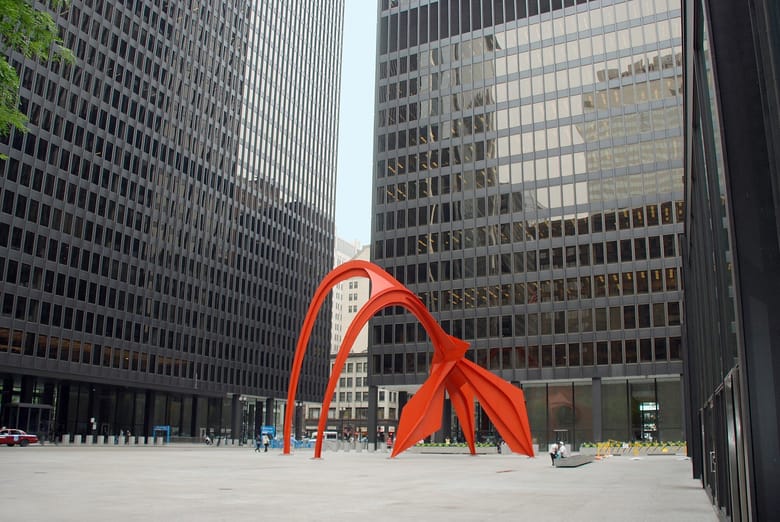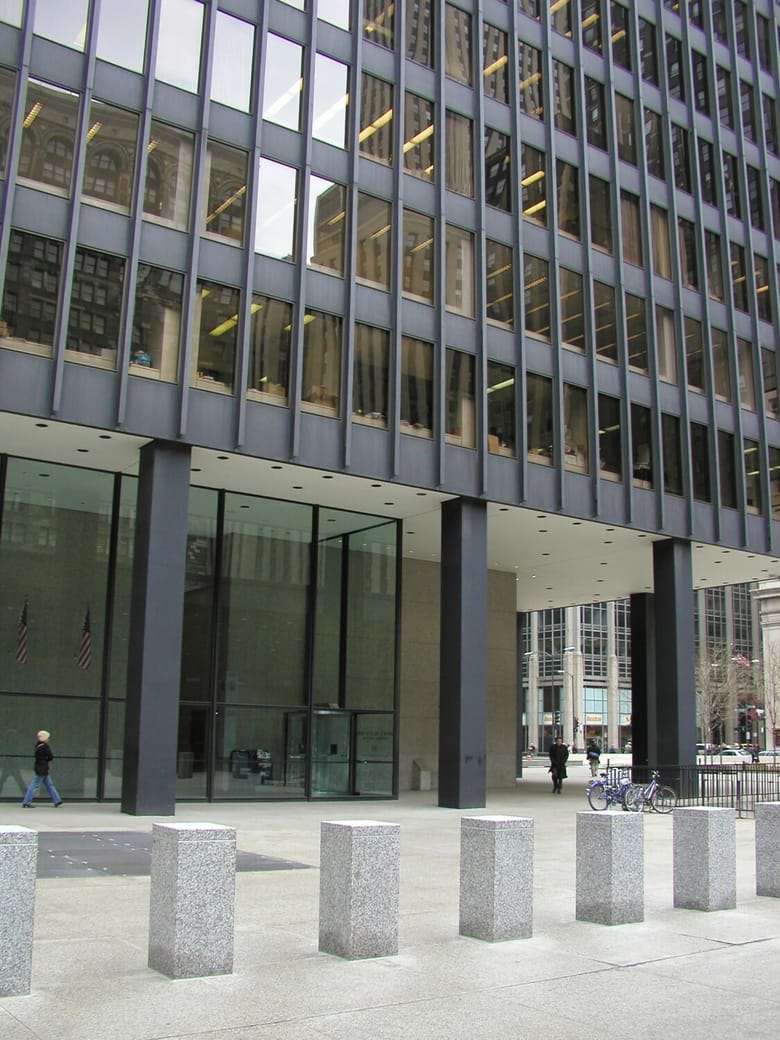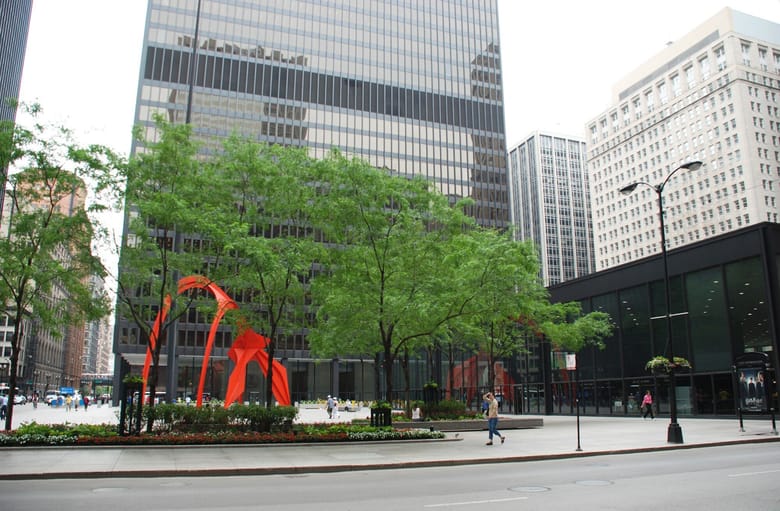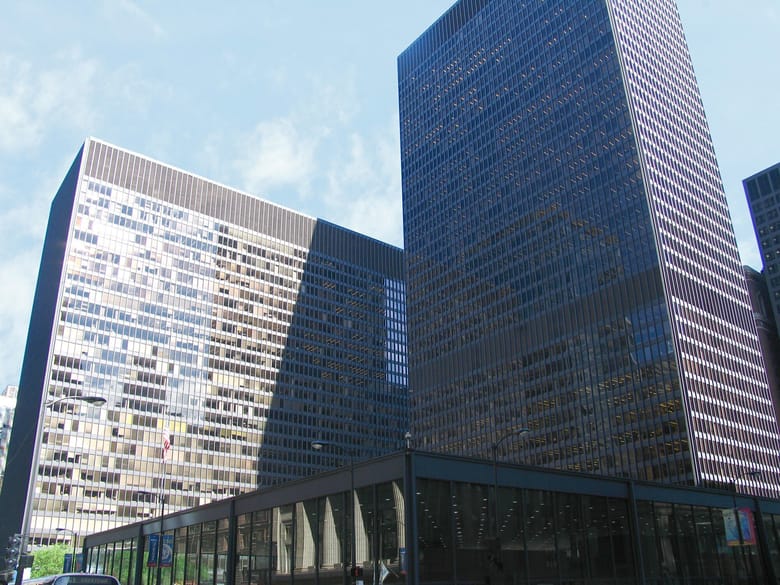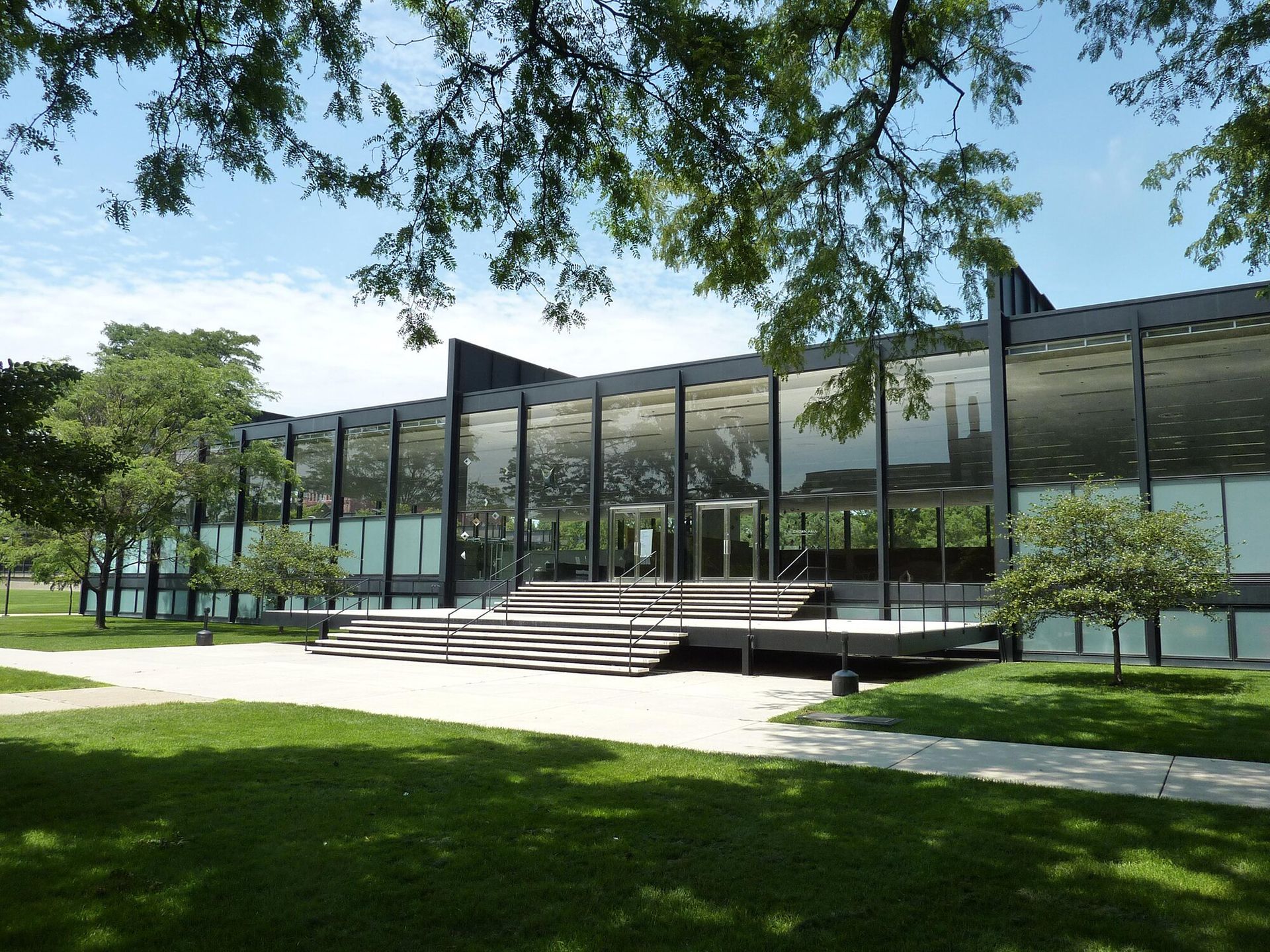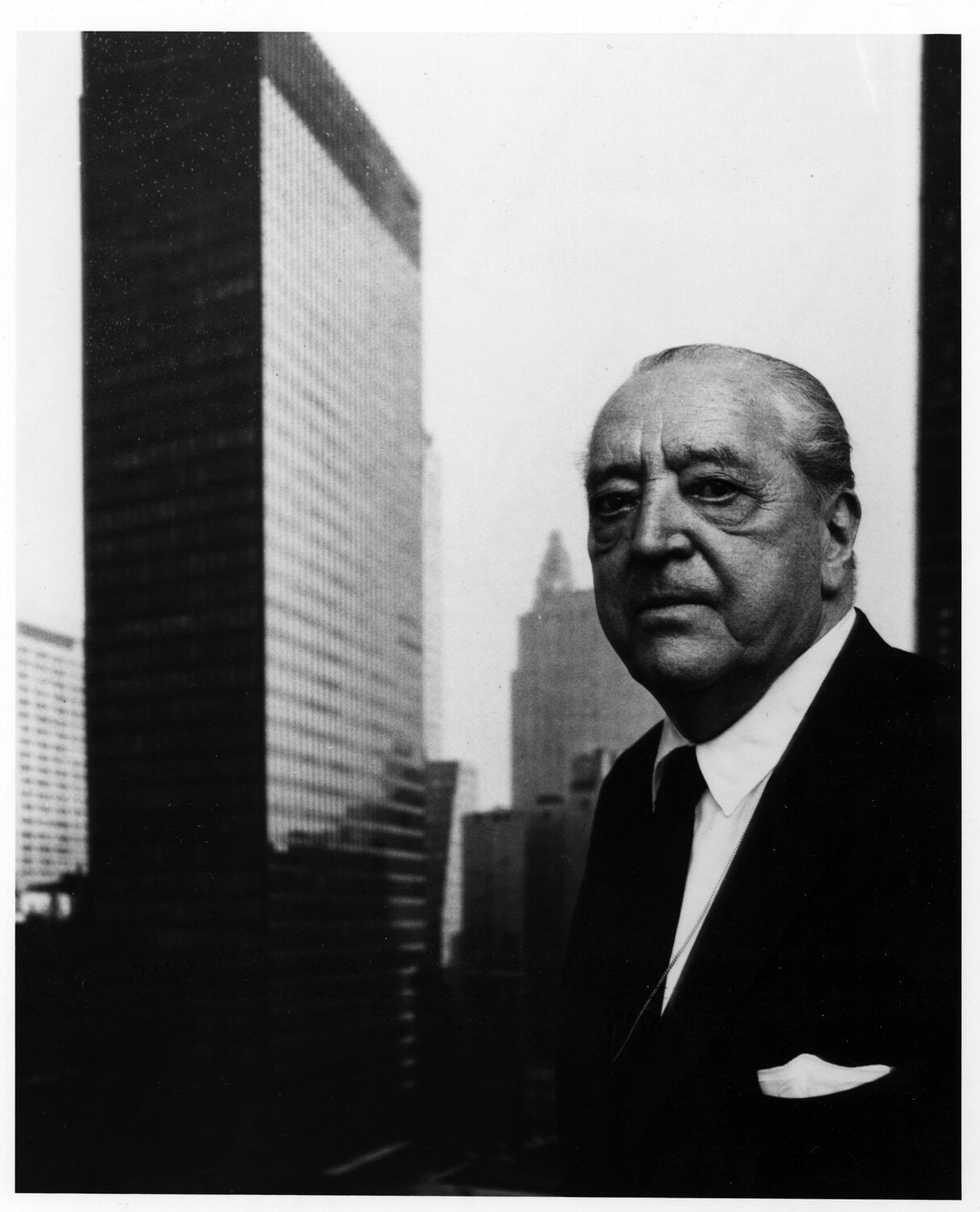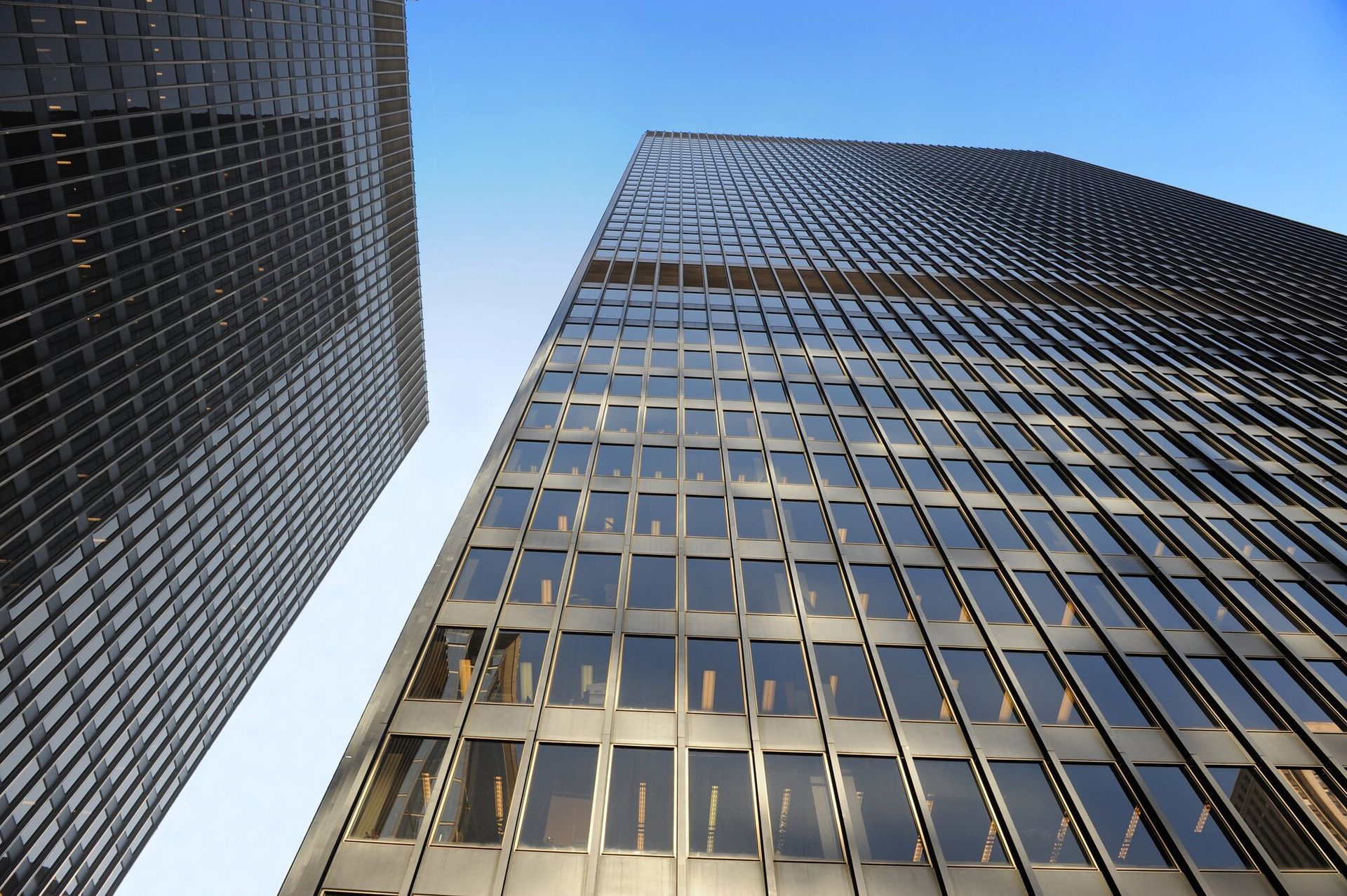The Chicago Federal Center, designed by Ludwig Mies van der Rohe, is a monument to the architect’s maxim, “Less is more.” Simplified, modern and efficient, the steel and glass buildings embody the Miesian vocabulary. Its 1974 completion signified a new era in the form and function of public architecture.
MAYOR RICHARD J. DALEY REVITALIZES CITY WITH ARCHITECTURAL DESIGN
During the late 1950s, downtown Chicago was bleeding businesses and its economy was struggling. Mayor Richard J. Daley saw an opportunity to take advantage of a U.S. government plan to update and replace federal facilities nationwide. His 1959 urban renewal plan called on the U.S. General Services Administration (GSA) to replace the 1905 Federal Building. The GSA commissioned Mies to design a new complex that would serve as an integral part of the Loop's revitalization.
Components of Chicago Federal Center:
- Everett McKinley Dirksen Building: 219 S. Dearborn Street
- John C. Kluczynski Building: 230 S. Dearborn Street
- U. S. Post Office, Loop Station: 219 S. Clark Street
MIES PROVES “GOD IS IN THE DETAILS”
In his design process, Mies developed three different schemes for the site, playing with various combinations of government offices, a courthouse and a post office. In his final design, he separated those functions into three distinct buildings all situated on an open plaza. Today, the plaza hosts festivals, farmers markets and protests—activities that signify the vibrant relationships between citizens, business and government.
The glass and steel buildings are constructed on a rigid grid system. Every element of the three-building complex—every column, light fixture, bench, door and paver—lines up on the grid. From the center of the plaza, you could spend hours finding all the places where the architectural elements align perfectly. In fact, we dare you to find one spot where they don’t. Mies’ meticulous design illustrates another of his famous maxims, “God is in the details.”
Despite this rigidity, the Federal Center’s design produces what architecture critic Franz Schulze calls, “a monumental urban presence.” Eliminating the usual pomp and circumstance of civic buildings, the Federal Center has become a beacon of the International Style and a Chicago icon.
Did you know?
The complex occupies a 4 1/2 acre site that is paved in light gray granite. The pavers continue into each building’s interior, where the only difference is that the granite is polished.
Did you know?
Federal Plaza is home to Alexander Calder’s Flamingo. The graceful, curvilinear work of art is a complementary contrast to the stark Miesian architecture surrounding it.
Did you know?
When additional security bollards were added to the plaza long after Mies’ death, Gene Summers, a disciple of the architect, was consulted to ensure placement would adhere to Mies’ exacting standards.
Did you know?
Everett McKinley Dirksen Building houses federal courtrooms and was named after the Republican senator from Illinois.
Did you know?
The John C. Kluczynski Building is a 42-story office tower named after the former Democratic congressman.
